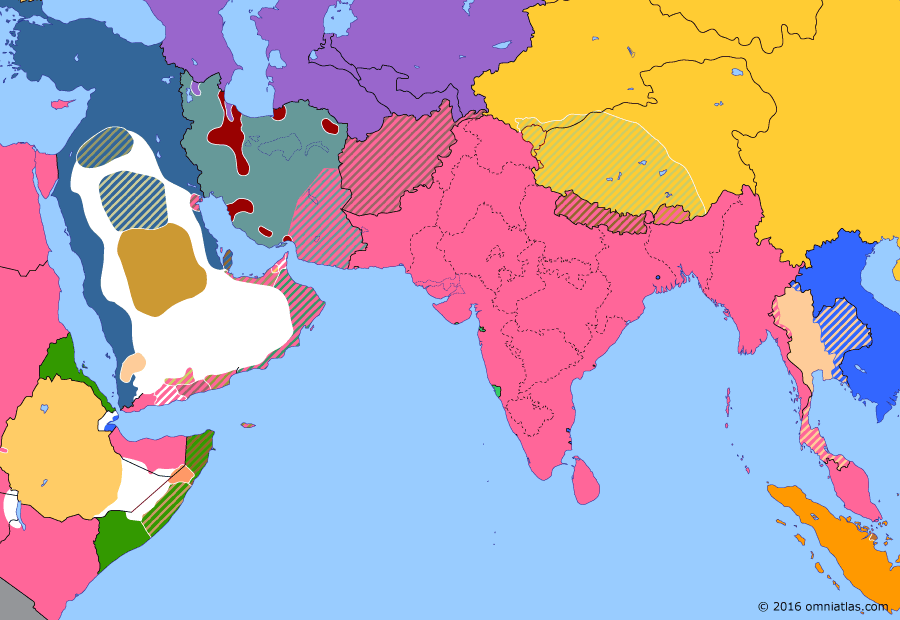Southern Asia 1909: Persian Constitutional Revolution
15 July 1909
15 Jul 1909
Pax Britannica
1880–1914 Pax Britannica
1914–1917 Great War in the Middle East
1917–1918 Fall of the Ottoman Empire
1918–1923 Anglo-French Overreach
1923–1934 Rising Nationalism
1934–1940 Arrival of the New Order
1940–1941 World War II: The Middle Eastern Theater
1941–1945 World War II: The South-East Asian Theater
1945–pres Independence
Persian Constitutional Revolution
15 Jan 1902 Saudi Restoration
3 Aug 1904 British Expedition to Tibet
16 Oct 1905 Partition of Bengal
31 Aug 1907 Anglo-Russian Entente
15 Jul 1909 Persian Constitutional Revolution
13 Nov 1911 Chinese Revolution
24 Dec 1911 Strangling of Persia
17 Aug 1912 Tibetan Independence
29 Jul 1913 Anglo-Ottoman Convention
3 Jul 1914 Simla Accord
News of the Anglo-Russian agreement provoked unrest in Persia, prompting its pro-Russian Shah to roll back recent reforms and arrest the Majlis (parliament). This only led to more instability, with Tabriz and numerous other cities revolting in 1908. Hoping to intimidate the revolutionaries but unwilling to become directly involved in the civil war, Russia sent in troops to protect European property. Undaunted by the Russians, the revolutionaries took Tehran on July 16, 1909, deposing the Shah the following day.
